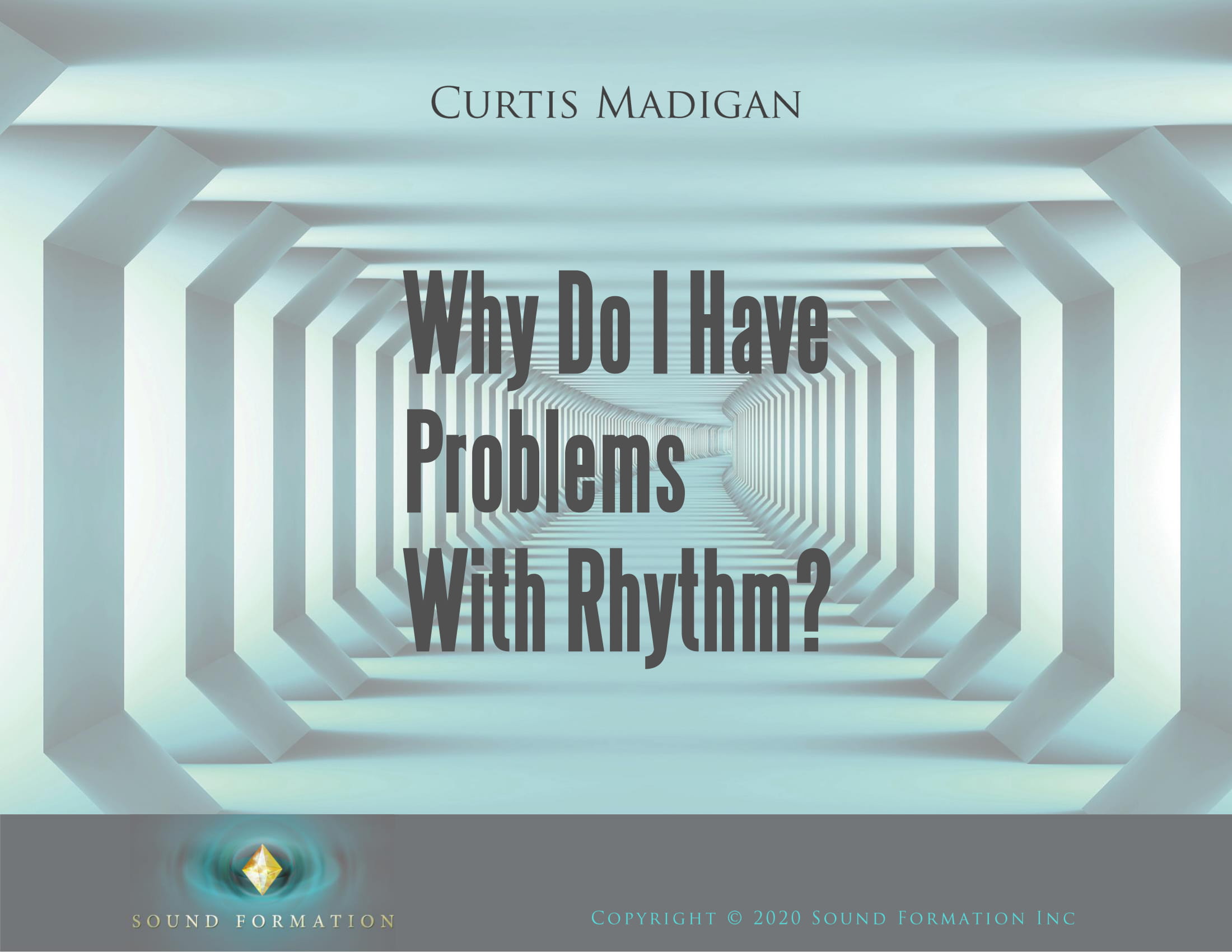Sound Formation Method™ Level 6
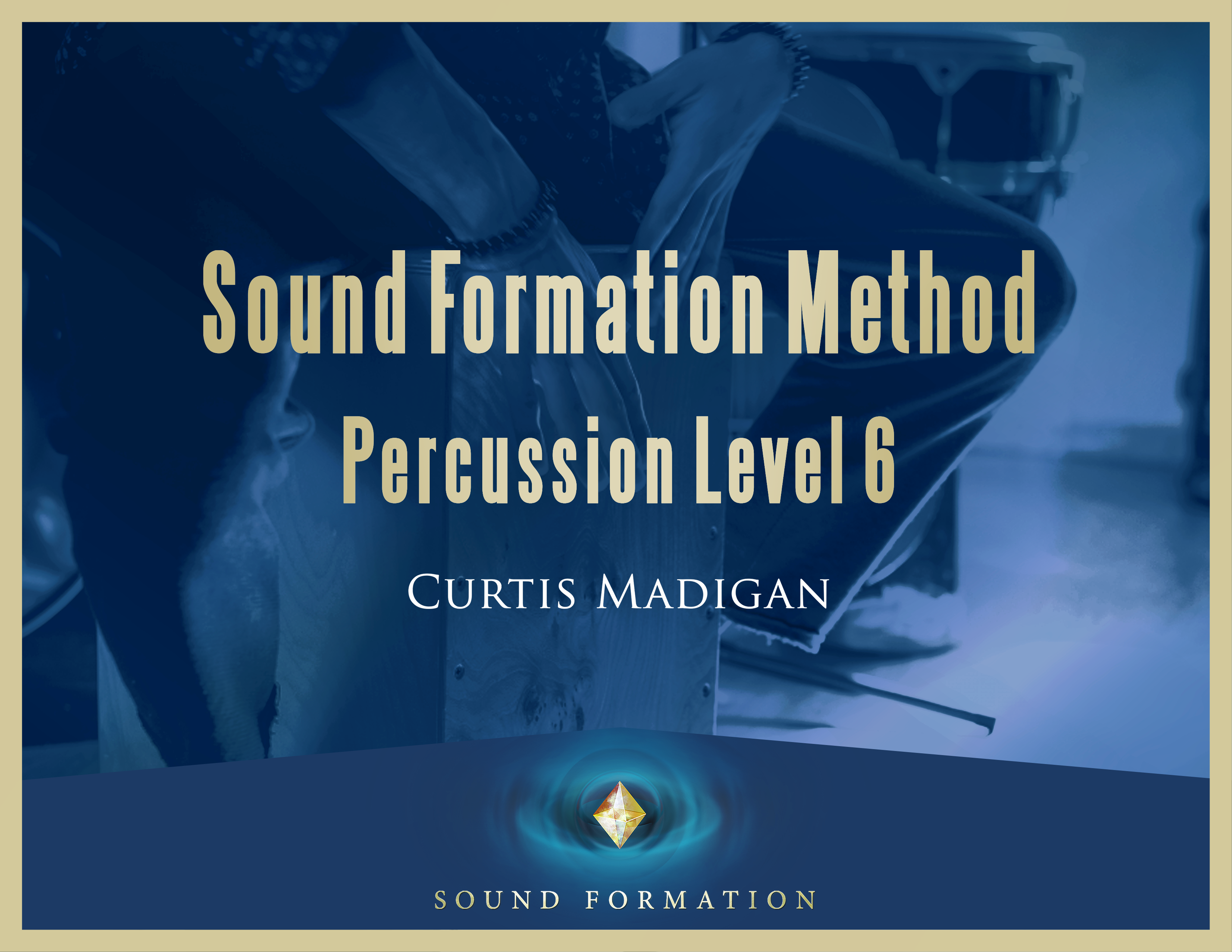 The Level 6 workbook unveils the relationship between: hemiolas, syncopated hemiolas, polyrhythm, metric modulation and polymeter. It also describes how to use phrase level rhythmic shapes to improvise. You’ll also understand the difference between implied vs actual metric modulation. Check out this revolutionary book that will change the way you hear and perform rhythm forever. This book is appropriate for those that have completed the Level 1-5 Workbooks.
The Level 6 workbook unveils the relationship between: hemiolas, syncopated hemiolas, polyrhythm, metric modulation and polymeter. It also describes how to use phrase level rhythmic shapes to improvise. You’ll also understand the difference between implied vs actual metric modulation. Check out this revolutionary book that will change the way you hear and perform rhythm forever. This book is appropriate for those that have completed the Level 1-5 Workbooks.
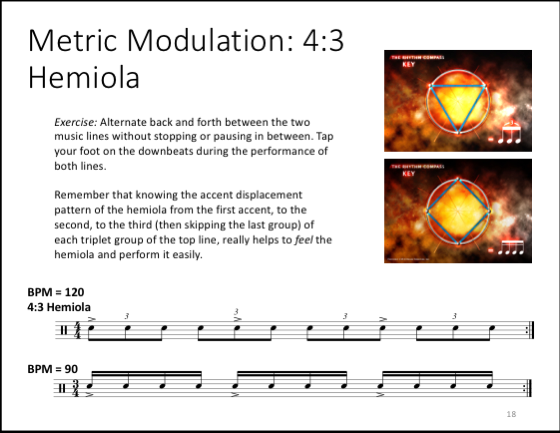
Two rhythmic lines with different time signatures and tempos can sound identical. This comes from the underlying hemiola that creates a bridge into metric or tempo modulation. Here we’ve taken a 4:3 hemiola and transformed it into it’s metric modulation equivalent.
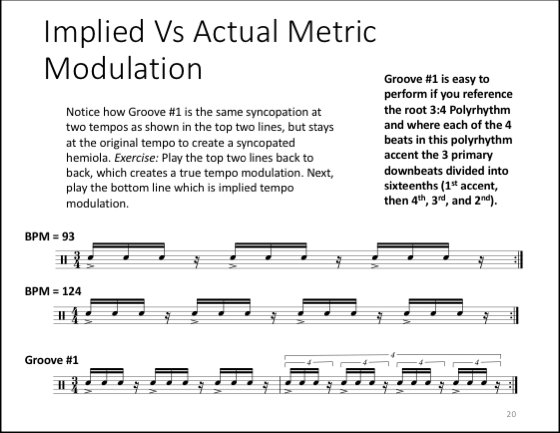 The exact same type of syncopation can be played at a different tempo via metric modulation or it can be implied without changing the meter or tempo. The former is shown at left in the top two lines and the latter in the bottom line.
The exact same type of syncopation can be played at a different tempo via metric modulation or it can be implied without changing the meter or tempo. The former is shown at left in the top two lines and the latter in the bottom line.

There is a brilliant and incredibly easy way to play EVERY syncopation you’ve learned so far in this workbook series as an implied tempo modulation. This is taught and many examples are shown in this workbook.
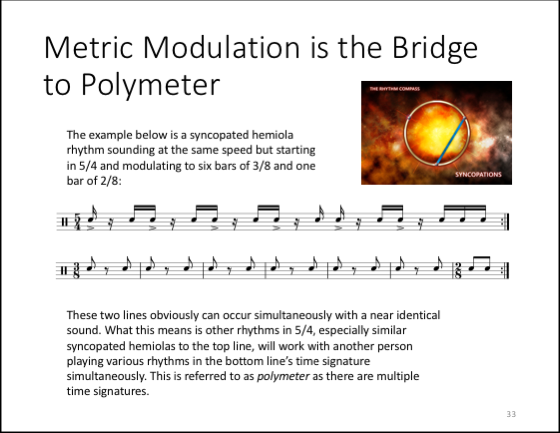 Polymeter is one of the natural outgrowths of what you’ll learn in this workbook series about polyrhythms, hemiolas, syncopated hemiolas, and metric modulation. It is incredibly simple to understand and begin implementing polymeter with the foundation given throughout this series.
Polymeter is one of the natural outgrowths of what you’ll learn in this workbook series about polyrhythms, hemiolas, syncopated hemiolas, and metric modulation. It is incredibly simple to understand and begin implementing polymeter with the foundation given throughout this series.
This book is the perfect guide to continue your journey in music. It will also unlock the mystery of rhythm and simplify and strengthen your learning process. This book is the sixth in a method that works sequentially from absolute beginner through advanced levels of mastery.
Designed for more advanced students that have studied Madigan’s system for some time.
See the Concept of Metric Modulation in Action
Check Out the Level I Workbook
This workbook is an essential tool for all instrumentalists in understanding and mastering not just rhythm but musical feel and groove.
Check out the Level 2 Workbook
This book is the second in an integrative system for mastering rhythm. This book teaches how to understand rhythm using sequences, operations, symmetry, exponents, factors and more.
Check out the Level 3 Workbook
This book is the third in an integrative system for mastering rhythm. This book teaches how to understand rhythm using binary numbers, reflections, rotations, symmetry, exponents and more.
Check Out the Level 4 Workbook
This book is the fourth in an integrative system for mastering rhythm. This book teaches how to understand rhythm using binary numbers, multiplication cycles, rhythmic melodicism, exponents, and more.
Check Out the Level 5 Workbook
This book is the fifth in an integrative system for mastering rhythm. This book teaches how to understand the relationship of polyrhythms and hemiolas, syncopated hemiolas, displaced hemiolas, neighboring syncopations and more.









